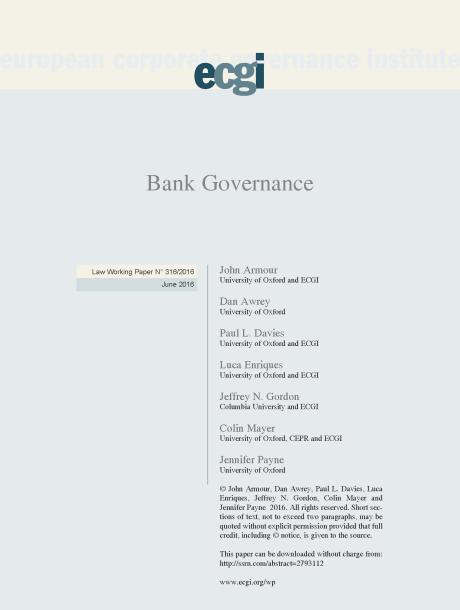
Bank Governance
Abstract
According to a common narrative, in addition to inadequate capital and liquidity, the failure of banks in the financial crisis also reflected their poor governance. By governance we mean broadly the oversight that comes from banks? own shareholders and other stakeholders of the way in which they are run. The problem of bank governance stems from the way in which banks are financed and regulated, from the externalities bank failures produce, and from the nature of their assets. In the period leading up to the financial crisis, it was believed that regulation would cause banks to internalize the costs of their activities, meaning that what maximized bank shareholders? returns would also be in the interests of society. Consequently large banks used the same governance tools as non-financial companies to minimize shareholder-management agency costs, namely independent boards, shareholder rights, the shareholder primacy norm, the threat of takeovers, and equity-based executive compensation. Unfortunately, such tools had the adverse effect of encouraging bank managers to take excessive risks: as we describe in this chapter, banks that had the most ?pro-shareholder? boards and the closest alignment between executive returns and the stock price were those which took the most risks prior to, and suffered the greatest losses during, the crisis. Consequently, a significant rethink about the way in which banks are governed is required. The structure and function of bank boards, the compensation of bank executives and the function of risk management within organizations needs careful crafting if governance reforms are to address not exacerbate bank failures.













